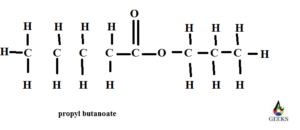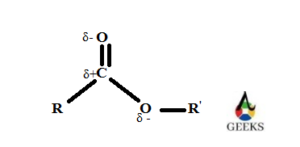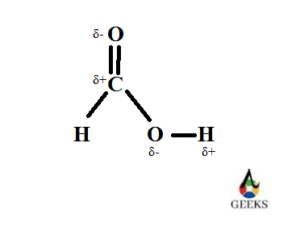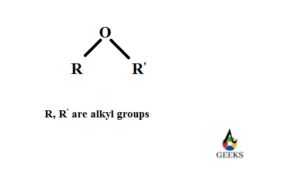In this article we are going to discuss about one of an important class of organic compound named esters and their polar behaviour.
Esters are class of compounds formed through the reaction between acid and hydroxyl group through the process called esterification.
Are esters polar ?
Esters are class of compounds which are formed by the interchange of the hydrogen atom of an acid by an alkyl or other organic groups. They are represented by the formula RCOOR’, where R and R’ are alkyl groups like methyl, ethyl, etc. In esters there is a carbon oxygen double bond and a carbon oxygen single bond can be seen. The two alkyl groups seen are attached to the carbon atom and oxygen atom respectively. Esters are used for the extraction of its sweet smell and as organic solvents.

Esters are organic compounds which are polar in nature.
Esters : 5 facts you should know
- Esters are carboxylic acid derivatives, where the hydrogen atom of OH group is replaced by an alkoxy(O-R) group. They are formed by the condensation of acids and organic compounds having OH groups like methanol, ethanol etc.
- Esters are sweet smelling substances. Their sweet aroma makes us feel pleasant and can easily detect its presence.
- Esters are ubiquitous in nature. Esters are class of compounds which are found anywhere. Since they are sweet smelling substances their fragrance can be felt in most compounds. The sweet pleasant smell in pear is due to propyl acetate, peach due to benzyl acetate, pineapple due to ethyl benzoate, raspberry due to isobutyl formate. Naturally occurring fats and certain essential oils are found to be fatty acid esters of glycerol.
- Esters are hydroneutral in its existence. Some compounds may be either hydrophilic that is water loving or hydrophobic means water hating. But this esters are found to be positioned in between hydrophilic and hydrophobic nature. So they are categorised into hydroneutral nature.
- Esters are colourless substance that exists as liquids while esters of higher molecular masses were found to as solids. Esters are flammable compounds.
Are all esters are polar ?
Esters are formed by the replacement of hydrogen of acids by organic group like an alkoxy group(O-R) groups. Esters are polar in nature. But their polar character is not same in all class of ester compounds. Esters formed from smaller acids or esters with low molecular masses were found to be more polar in nature. While the esters with higher molecular mass are less polar in nature.

This decreased polar behaviour is due to the presence of long chain on one side of carbonyl group. The carbonyl carbon and oxygen gives a polar nature to esters. The presence of long chain with high molecular mass on one side or either side of carbonyl group reduces the dipole moment of carbonyl carbon. So all esters are not found to be polar in its nature.
Why are esters polar ?
Esters are polar due to the presence of double bonded oxygen and carbon and single bonded carbon and oxygen. On comparing carbon and oxygen, electronegative character of oxygen imparts a negative charge to both the oxygen and positive charge to the carbon atom. This makes ester molecule into a polar molecule.
When a polarisation is developed on carbon and oxygen atom in ester molecules two dipole where formed. One in between single bonded carbon and oxygen while other between double bonded one. So there arise a dipole dipole interaction in between them and makes this compounds more polar.

Instead of dipole dipole interactions weak forces like vanderwaals force also acts there in ester molecules makes them to show polar behaviour. Due to the presence of lone pair of electrons in oxygen atom they are good hydrogen bond acceptors. There is no intermolecular hydrogen bonding takes place in esters.
Are esters are strongly polar ?
Esters are found to be polar molecules in nature. But their polarity depends on its chain length. Esters are polar molecules but their polarity is low are compared to the acids from which they are formed.
Are esters more polar than carboxylic acid ?
Carboxylic acids are compounds having a OH group and C=O group. Carboxylic acids are polar molecules. They are polar due to the carbonyl carbon, oxygen and hydroxyl group. Presence of hydrogen makes them acidic in nature and they can form intermolecular hydrogen bonding. There are 3 dipoles present in carboxylic acids. One between double bonded carbon, oxygen. Two between single bonded carbon, oxygen. Three between oxygen and hydrogen of hydroxyl group. Due to these reasons carboxylic acids are very much polar in nature.

But the polar character of esters are very much lesser than that of carboxylic acids. Because esters have only 2 dipole and are not able to form intermolecular hydrogen bonding within itself like acids.
Are esters more polar than ethers ?
Esters are more polar than ethers. In ethers there is two carbon oxygen single bond exists.

On comparing esters and ethers, there is both double bond and single bond seen in carbon oxygen while in ethers there is only carbon oxygen single bond. In carbon oxygen double bond carbon is sp2 hybridised, but carbon oxygen single bond is sp3 hybridised. Due to the increased s character in sp2 hybridised carbon and shorter wavelength of double bond esters are more polar than ethers.
Conclusion–
So this article says about one of a special and important organic compound esters and their polarity. Esters are seen to be a polarised due to the presence of electronegative oxygen and carbon. The polarity of acid and alcohols are much more than that of esters while ethers are found to be less polar in its behaviour.

Hi… I am Aparna Dev, a chemistry Postgraduate with a good understanding of chemistry concepts. I am working in Kerala Minerals and Metals Limited Kollam with experience in the development of electrocatalysts as a part of post graduate thesis.
Let’s connect through LinkedIn-https://www.linkedin.com/in/aparna-dev-76a8751b9